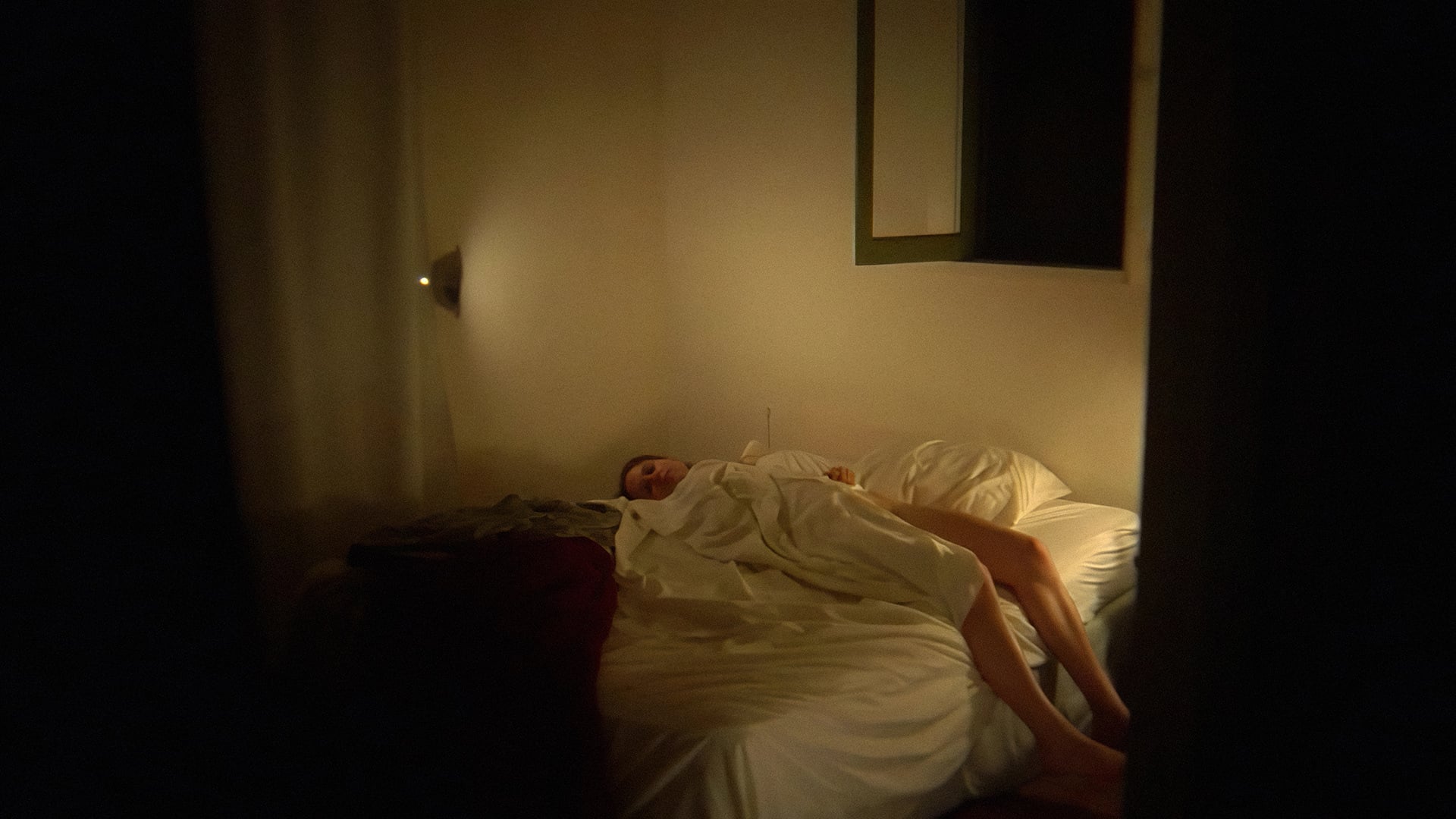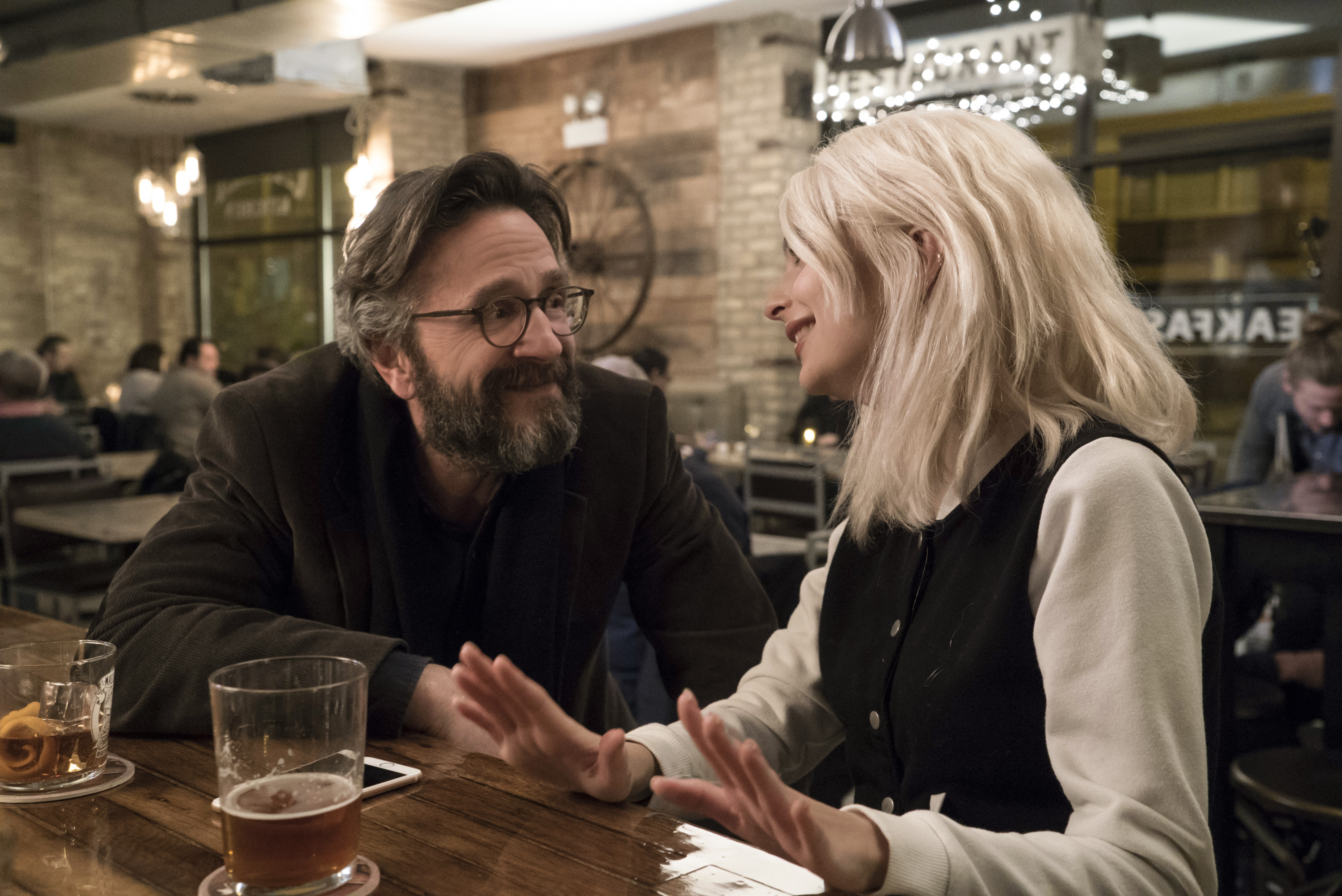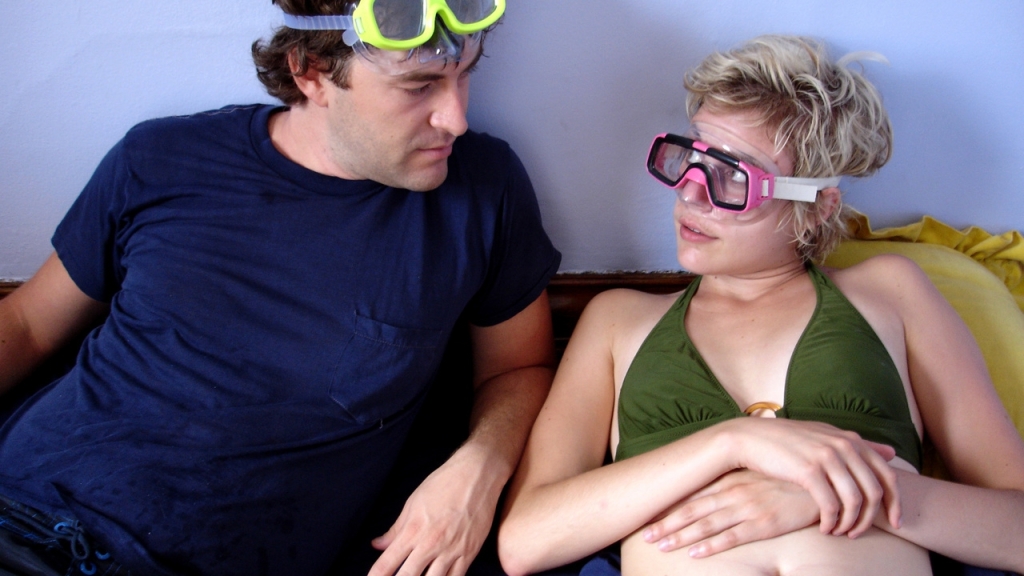Joe Swanberg was born in Detroit, Michigan on August 31, 1981. During his childhood and early adolescence, he watched three films that got him interested in filmmaking. While Evil Dead 2 (1987) and Jacob’s Ladder (1990) gave him new perspectives on the power of film, it was after watching Raising Arizona (1987) he felt that he wanted to spend the rest of his life making films — or, at least, trying to.
After studying film production at Southern Illinois University Carbondale, Swanberg released his first feature film, Kissing on the Mouth, in 2005. Created by a small overlapping cast and crew, the film featured real interviews with college graduates, as well as a candid approach to conversations and explicit sex in young people’s lives. In a statement that accompanied the film, Swanberg wrote, “It was important to us to present realistic images of ourselves, as we are frustrated with the current representations of our generation.” Since then, the independent filmmaker, screenwriter, editor, cinematographer, actor and producer has been hard at work, and his résumé speaks for itself — and he is far from done exploring.
With an interest in communication, relationships, sex, technology, and the filmmaking process itself, Swanberg’s stories rely on people being people. In Hannah Takes the Stairs (2007), Hannah (Greta Gerwig) proclaims that people are naturally terrible to each other. Truth be told, people often are, sometimes without even meaning to be. We try to be careful of other people’s hearts — and our own — but inevitably, something painful will happen. People fall in love with people they shouldn’t, nobody hears what anybody else is saying and we constantly say the wrong thing.

Nights and Weekends (2008) revolves around Mattie (Gerwig) and James (Swanberg), a couple trying to navigate a long-distance relationship. The film, structured as a series of visits between their respective cities, starts with joyous glimpses of their relationship. But with each visit, there’s a romantic disintegration between them. What started as enthusiastic meetings are soon replaced by disappointment when things don’t go as planned, caution when being intimate, and general insecurity about their future. As they’re beginning to struggle, their visits turn into reminders of the difficulties of their relationship, rather than pleasures.
Swanberg creates work that both recognizes and embraces the everyday existence of hope and despair. This might present itself in the excitement of a kiss lingering in the air between two new acquaintances, but also in the hesitance someone might feel when a lover leans in for a kiss and they half-heartedly oblige out of commitment rather than romance. The problems these characters face might in and of themselves feel trivial when compared with the big picture of things, but for a singular individual, they all cause as much emotional turmoil.
In the beginning, when he didn’t have the resources to hire trained actors, Swanberg worked with friends and people with little or no on-camera experience. While some projects in his career have included bigger budgets and bigger names, this has never been at the cost of his trademark style, which has been apparent his whole career since those early days of learning by doing. Instead of meticulously planning everything, he prefers letting things unfold naturally. Swanberg, who frequently shares credits on projects and continuously highlights that making films is a team effort, strives to create projects that feel original. Instead of focusing on conventional narratives and potentially limiting scripts, he instead turns his attention to characters, situations and themes.

Drinking Buddies (2013) follows the relationship tribulations of Kate (Olivia Wilde) and Luke (Jake Johnson), two co-workers at a Chicago brewery. They spend a majority of their days together, either at work or hanging out after work. They’re comfortable and flirty in each other’s company, but they’re also in relationships with other people. When Kate and Luke, along with their respective partners Chris (Ron Livingston) and Jill (Anna Kendrick), leave for a weekend getaway, it raises questions about which people should be in which relationships. This is particularly evident in the contrasts between alternating shots of Jill and Chris on their sophisticated hike and picnic with red wine, and shots of Luke and Kate drinking beer, playing cards and coming up with sandwich combinations.
Just as viewers might begin to anticipate what will come next — a swapping of partners — Swanberg cleverly subverts the audience’s expectations. Later, when Kate’s relationship with Chris ends, the possibility of Luke and Kate as a couple once again looms large in the air. The film lingers on the possibility of their flirting potentially going too far, but the story always goes in the opposite direction of what we’ve come to expect from similar stories.
The use of improvised dialogue succeeds in mirroring the complexity and shortcomings found within human communication. Allowing actors to feel situations out in real time leads to more authenticity, as they’re allowed to breathe and react accordingly. Whether it’s the slight tonal changes in someone’s voice or the use of mistimed body language, there are several ways for actors to express the various ways in which people might reveal who they are or what they feel. Few filmmakers rely so consistently (and heavily) on improvisation as Swanberg does. For him, it originates from a wish to let characters speak for themselves, without forcing words into their mouths. When Kate talks about her new living situation since becoming single, her choice of words speaks loudly. “I just needed a smaller place because my place is meant for two, and I’m meant for one, so I’m moving to a little place,” she says. It’s almost said in passing, but in that exact moment, it reveals something about Kate’s inner turmoil.
When it’s not expressed through language, these actors reveal subtleties through their performances, as every little change in facial expression and body language conveys inner desires, insecurities and conflicts. It might look effortless, but it’s not easily imitated. It’s a process emphasized by an extreme vulnerability for all involved, and you have to trust your gut that the chosen actors are right for their parts.

In the final scene of Drinking Buddies, Kate and Luke are reunited during lunch at work for the first time since their big fight. While sitting in complete silence next to each other, they’re still able to reassure each other that they’re okay. The signs are usually there — what people feel, even when they don’t explicitly say it. They are found in suggestive flirting, longing gazes, in the way someone touches you, or in that near intoxicating inhale you might do into someone’s neck when you tightly hug after being apart. Drinking Buddies’ effortlessly charming ending, encapsulated in the simple gesture of carefully passing a couple of fries as a peace offering, says so much more than words ever could.
Swanberg’s work regularly comes under fire online for its lack of traditional narrative and inclusion of characters that aren’t always very likeable. Yet this is precisely what makes him fascinating, as he is less interested in trying to cater to audiences than he is in thoroughly exploring human nature to fill a void he feels exists in film.
Art History (2011) follows the making of a sexually explicit film along with what unfolds when the film’s director Sam (Swanberg) struggles to maintain a professional relationship on set as Juliette (Josephine Decker) and her co-star Eric (Kent Osborne) start developing feelings for each other. Through someone else’s direction, the themes explored in Art History could’ve easily felt like an easy way to attract audiences with a promise of titillation, but Swanberg’s intention never seems to be arousal. Instead, he seems interested in exploring the emotionally complex journey that takes place between people during intimate moments — a journey that may continue long after the camera is turned off.

For way too long, people have perceived sex as much more upsetting than violence. We’ve become numb to violence, desensitized by its repeated exposure in our daily lives, and to some people, it still feels more natural to see a woman assaulted on screen than for her to receive sexual pleasure. As people still argue if there’s a need for the inclusion of sex that ‘doesn’t advance the plot,’ they forget the vital point that sex, just as in real life, doesn’t need to be anything more or less than simply sex. Swanberg, who has participated in and directed several explicit sex scenes throughout his career, is less interested in sexualizing bodies than he is in observing how we use them as a way to communicate and convey our emotional states.
When Juliette and Eric in Art History begin to explore their feelings off-screen it’s initially exciting for them, as if the fictional scenario they’ve been carefully placed into was real all along. However, when they are shooting another scene towards the end of the film, there’s a distinct tonal change. Judging by her body language, Juliette doesn’t even seem to want to touch Eric, as she struggles to know where to place her hands even when they aren’t filming. It’s mechanical and done more out of commitment than anything else.
Albeit very different situations, another example of changes in physical touch is found in Nights and Weekends. The film begins with James and Mattie barely managing to close the door of James’ apartment before they’re clumsily kissing on the kitchen floor while struggling to undress. This rush of trying to get naked, and the sheer intense physicality of feeling it isn’t happening fast enough, immediately informs viewers any information they need to know about the current state of their relationship. However, the couple’s final — and ultimately aborted — sexual encounter is devastating in comparison. There’s a kind of indifference looming in the air, once again capturing authenticity and rawness, but this time on the other side of the spectrum. When Mattie proposes oral sex and James suggests a position she has never enjoyed, it’s evident how out of touch with each other they are. This is further emphasized when James tries to hold Mattie, and she can’t hide how uncomfortable she feels.

Watching Swanberg’s work sometimes feels almost too intimate, like you’re eavesdropping on something that isn’t meant for your ears. Since certain scenes only feature natural sounds recorded during the production — albeit there’s not always musical scores to dictate what we should be feeling — they can feel as if everything is at stake. Whether it’s a kiss or an argument, there’s nothing to hide behind or to lighten the fall.
In Hannah Takes the Stairs, Hannah’s roommate talks about a psychiatrist who used to say “Tolerate the uncertainty,” referring to choosing to tolerate the general uncertainty of not knowing everything. In reality, many of us are extremely impatient. We don’t like walking blindly into the dark, figuring things out as we go. Instead, we want to find the light switch and get to the end, hopefully without too much hassle and hurt. In the end, hurt is inevitable and trying to avoid it only leads to a life half-lived.
There’s an undeniable uneasiness about relationships, found in the basics of how you can go from almost merging into one to slowly turning into two separate beings that don’t seem to live on the same planet anymore. It’s a double-edged sword — by being fully open, you reach the sweetest rewards, but you also risk getting the most hurt. All those late nights sharing insecurities and secrets might one day potentially turn into ammunition for someone to hurt you in all the right places. Few filmmakers explore this as bluntly as Swanberg.
Humans are deeply flawed and morally conflicting, and it feels rare to see work continuously exploring this so loudly and candidly. As a creative person who has dedicated so much of his own being to his work, it’s inevitable to not get self-reflective on the industry you’re in. This is observable in the double standard explored in Easy’s (2016-2019) episode “Art and Life” — starring Marc Maron as a graphic novelist who uses his personal experiences with women for artistic inspiration, but feels affronted when it’s done in reversal — as well as in the emotional recklessness in Art History. In these examples, Swanberg explores the potential realities of full-time creatives, the issues of morality they might face and how selfish you can become when you’re absorbed and borderline obsessed with a project.

If Art History feels visually claustrophobic, All the Light in the Sky (2012) is one of Swanberg’s more picturesque films with its oceanside setting. Capturing the stunning merging of colours during sunsets as well as waves crashing into rocks, it’s surprisingly calming. Jane Adams, credited as co-writer, delivers a sympathetic performance as Marie, a middle-aged actress starting to face the harsh realities of being in an industry obsessed with youth and vanity. When her younger niece, fellow actress Faye (Sophia Takal), arrives to stay with her, the film could easily take a route of jealousy for the sake of creating drama. However, just as in Drinking Buddies, Swanberg subverts expectations. Marie is maternal towards Faye, and their loving kinship is further emphasized as the pair frankly discuss relationships, their bodies, and the various societal expectations of women.
All the Light in the Sky ends with an outstanding final shot that almost blurs water and sky together, as it beautifully captures birds flying in and out of the frame whilst Marie paddles away on her board alone. While it could’ve easily felt terrifying, as the ocean looks never-ending and Marie is all alone, it conveys ideas of optimism and hopefulness in its comforting execution of deciding to be one with nature. In the end, even though it might be easier to zip a wetsuit up with someone else, it’s still completely manageable to do it on your own. Sometimes the films that are seemingly about nothing at all might end up being the ones conveying the loudest messages.

Swanberg approaches nudity with naturalistic ease, an attitude that makes him stand out amongst other filmmakers, and not just because he features male and female nudity equally. It’s refreshing to see not solely sex scenes but nudity in general filmed so casually instead of capturing bodies in ways that feel inherently objectifying. Additionally, these bodies aren’t solely presented for the sake of showing them in sexual scenarios, they’re just as often seen in everyday situations such as showering, shaving, and getting dressed and undressed.
However, this exploration of nudity isn’t solely reserved to a physical kind. Some of the most intimate moments between James and Mattie in Nights and Weekends aren’t even sexual, but when they eat together, reveal something about their mental self-image or talk about whether either has ever said “I love you” and not fully meant it. It’s an emotional nakedness, available to all who are brave enough to be vulnerable with someone else. However, sometimes you might not be ready to be fully honest, especially if your feelings are conflicting. Getting undressed is easy; daring to be emotionally naked is harder. When Kate in Drinking Buddies gently lies down beside a sleeping Luke, the act conveys a feeling of tenderness and pain all at once, as it subtly reveals Kate’s conflicting inner desires.

Regardless of what you think about Swanberg or his work, you’re rarely left without an opinion after watching something from his filmography — and isn’t that what filmmaking should be all about? It’s admirable to have filmmakers who dive into their work, dare to put themselves in vulnerable positions, and not solely demand vulnerability from their performers. Swanberg is still fearlessly exploring his craft in original ways, all these years later.
People are simultaneously the best and worst things about this world. Nevertheless, people are all that we have got. Swanberg knows this, and by choosing a collaborative process between filmmaker and actor, audiences are treated to modest but highly authentic portrayals of people who, like the rest of us, are simply trying their best. While films can provide general escapism, characters have the potential to let viewers safely explore the strengths and weaknesses of human behaviour without ever engaging in said behaviour themselves. Swanberg’s characters offer comfort and relatability, but above all, they might lead to a better understanding of not just the people around us, but also ourselves.


Leave a comment